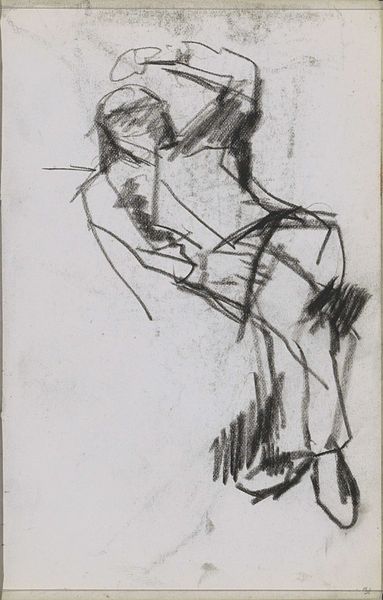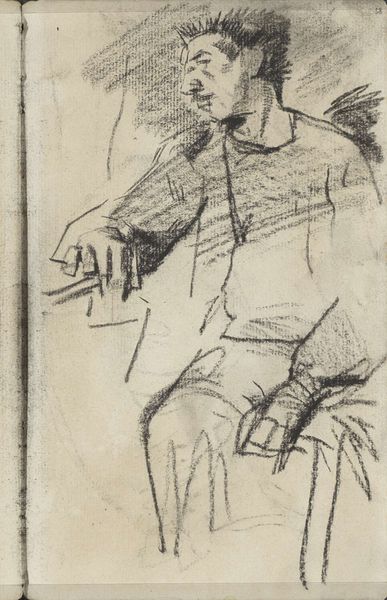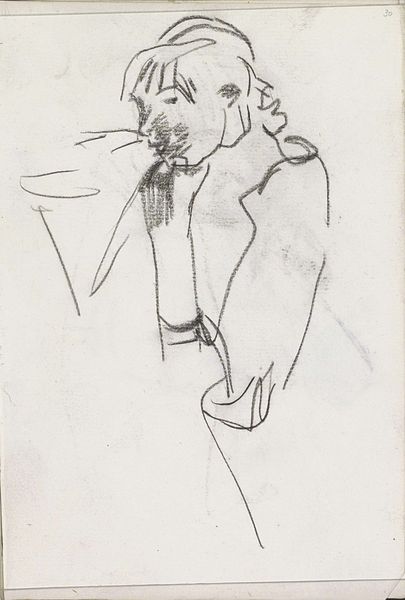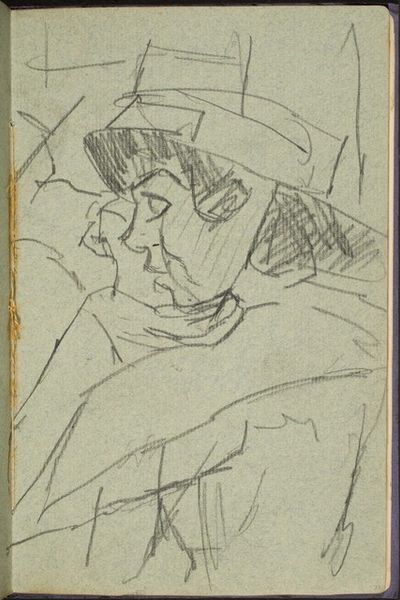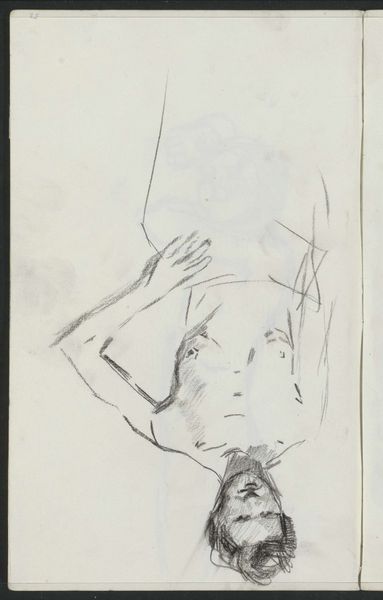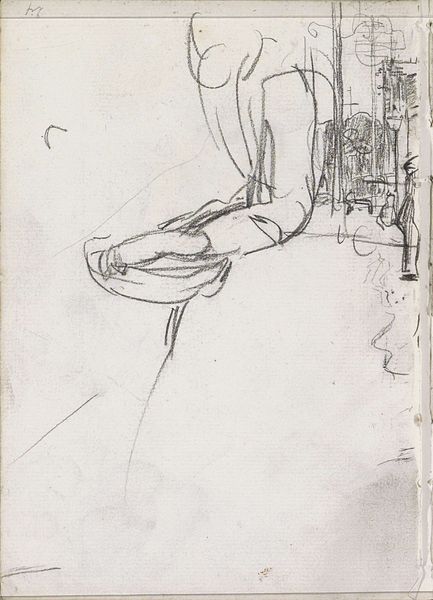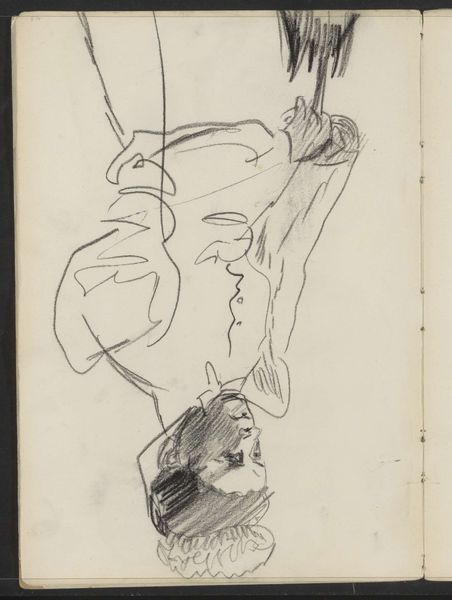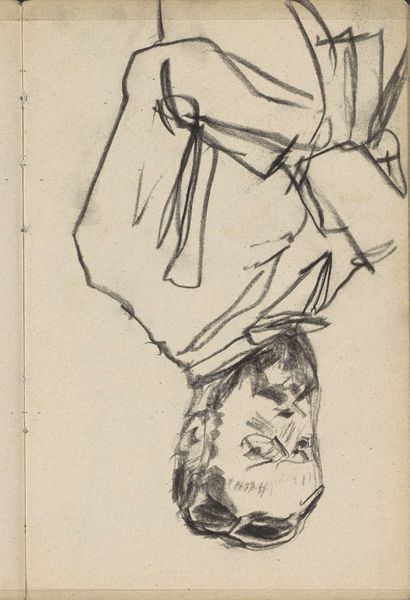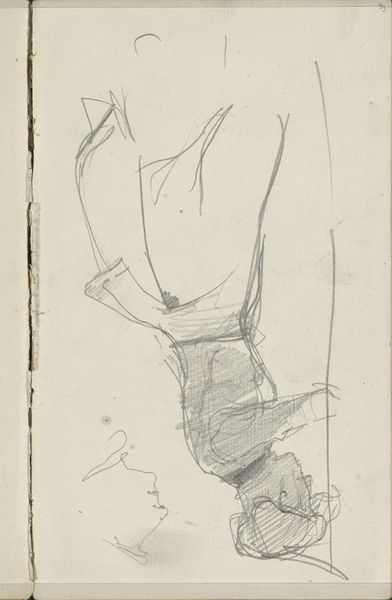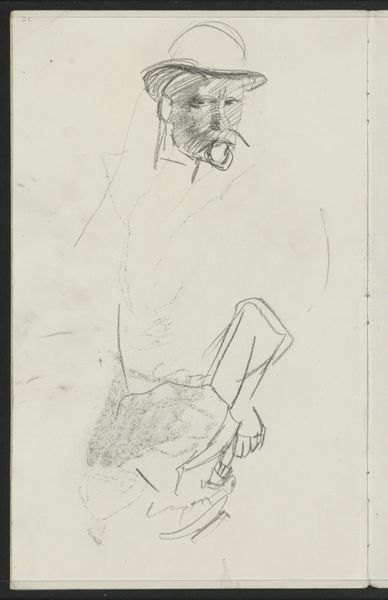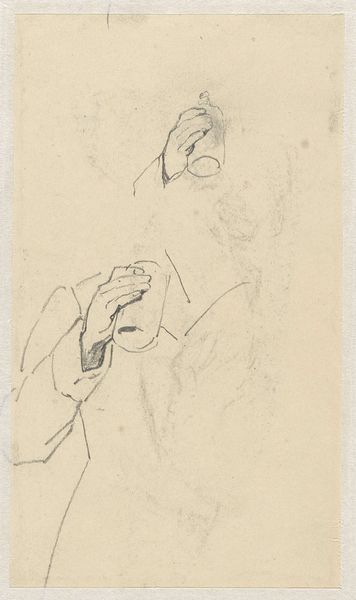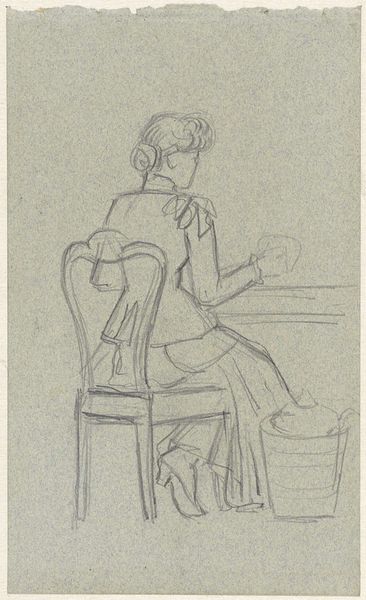
Copyright: Rijks Museum: Open Domain
Curator: Look at this drawing; Isaac Israels captured this pensive scene, “Vrouw die uit een kop drinkt,” sometime between 1875 and 1934. It's here at the Rijksmuseum, and rendered in pencil. What's your immediate take? Editor: Well, my first thought goes to the artist's process. I mean, you can see every mark, the visible labor of each stroke. It feels incredibly immediate and unfiltered. The simple act of sketching like this implies something almost fleeting, doesn’t it? Curator: Exactly! Israels, deeply rooted in impressionism, emphasizes the moment. It's like he's capturing the quiet intimacy of daily life. Notice how the composition is quite bare; it leaves room for our imagination, don't you think? The focus truly shifts to her posture and cup itself. Editor: It also highlights the humbleness of the act itself. Coffee, or perhaps tea. The quotidian—it underscores that her hands and the cup are just as important, labor-wise. The cup isn’t just a thing; it represents an entire network of extraction, manufacture, distribution. It all adds an economic context, doesn't it? Curator: A sharp contrast, as well. There’s also something deeply melancholic about this; the woman drinking almost disappears into this humble act, shadowed under what I find to be this wonderful yet simple play of light. What resonates, for me, is his emotional truth here; it’s an intimate character study through very limited means. Editor: True, but pencil drawings, at the time, also played a huge part as commercial objects—think newspapers, books, posters. In that context, drawings were often the first stage of image production; something gets a little lost when thinking only of high art and the singular object, right? Curator: A worthy challenge, because perhaps that tension is what makes this drawing, or even study, so engaging: we are offered a glimpse behind the curtains, while we confront our biases about craft itself! Editor: Exactly! It's like the artist wants us to remember art as both a physical thing, and as an idea… perhaps one fueling the other. Curator: I must say that looking at the piece and analyzing it together like this is a testament to the artist’s success, making a moment like this so alive through something as common as a pencil! Editor: I concur! It’s truly rewarding when materiality, method, and historical reflection offer so many different angles, allowing you to appreciate more something we take for granted.
Comments
No comments
Be the first to comment and join the conversation on the ultimate creative platform.
